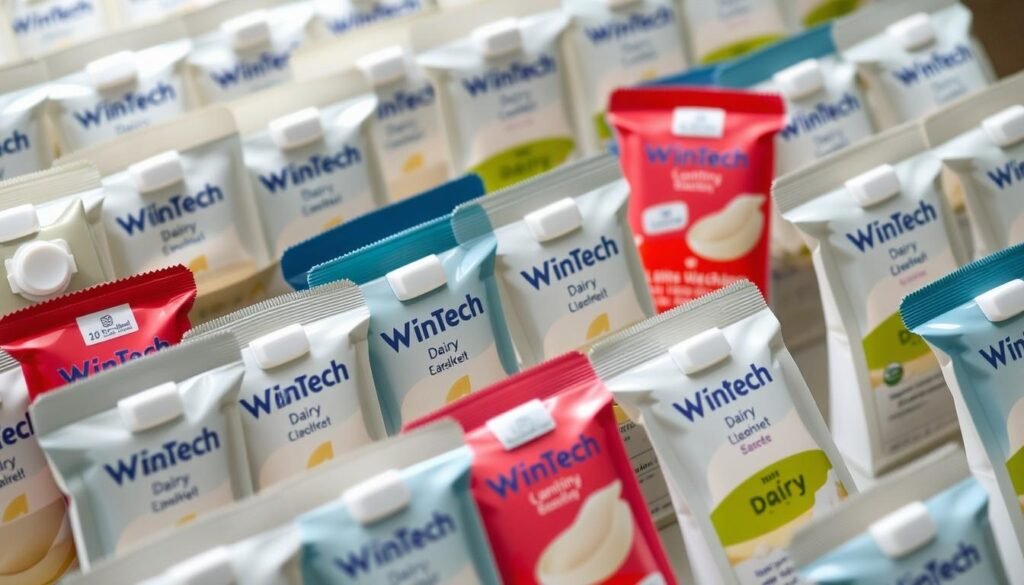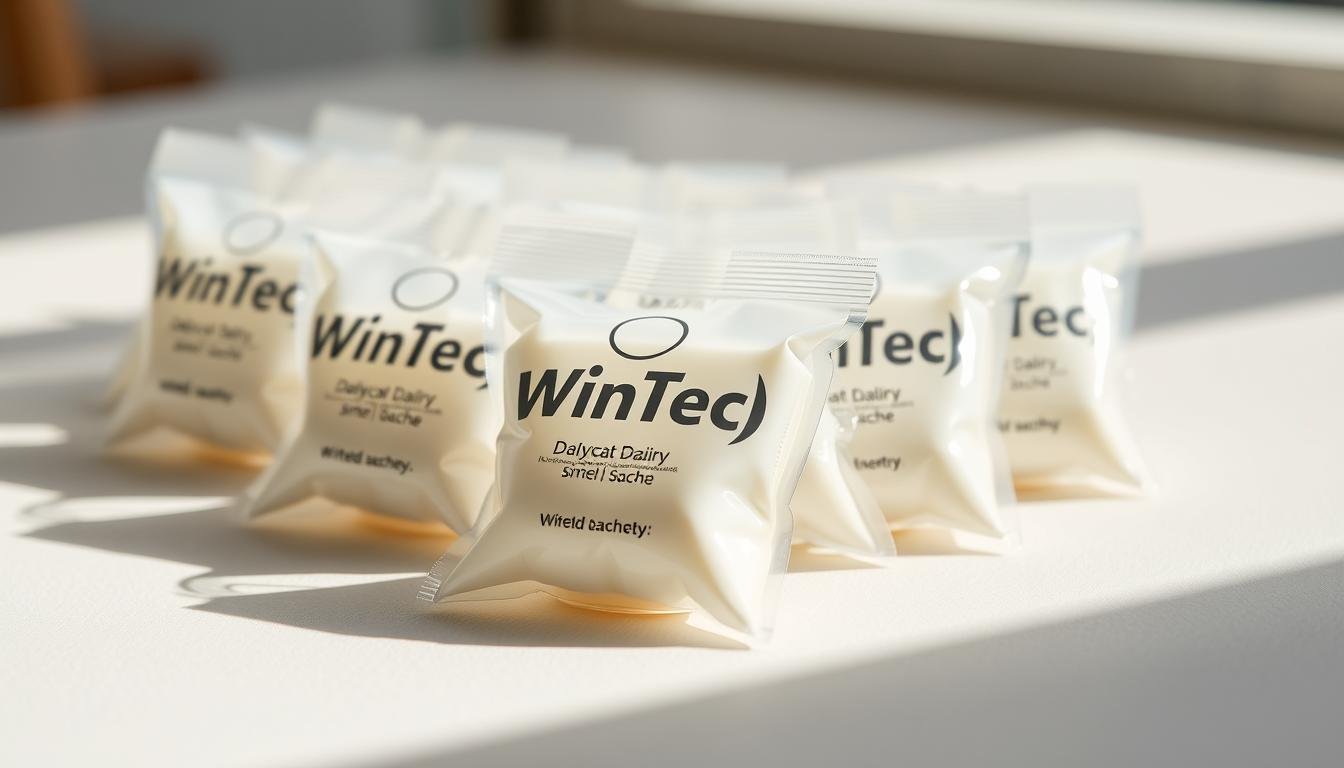Have you ever wondered how dairy producers keep their products fresh and protected during transportation and storage? What are sachets, and why are they revolutionizing the dairy packaging industry?
Sachets are small sealed packages designed to solve critical packaging challenges in dairy processing. What are sachets exactly? These single-use pouches provide an innovative solution for preserving milk, cream, and other dairy products. By creating a protective barrier against environmental contaminants, sachets ensure your favorite dairy items maintain optimal quality and safety.
What are sachets in Dairy packaging? Dairy packaging represents a complex science where precision matters. Small sealed packages like sachets have transformed how manufacturers approach product protection. These single-use pouches enable precise portioning, extend shelf life, and minimize potential contamination risks.
Understanding what are sachets requires exploring their unique design and functionality. From individual milk servings to specialized cream containers, these packaging solutions offer unparalleled versatility in the dairy industry.
Key Takeaways of What are sachets
- Sachets provide critical protection for dairy products
- Single-use pouches enable precise product portioning
- Packaging innovations enhance food safety
- Small sealed packages extend product shelf life
- Sachets offer flexible solutions for dairy manufacturers
What are Sachets? A Comprehensive Overview
Sachets have revolutionized the way dairy products are packaged and consumed in the United States. These small, convenient packaging solutions offer unique advantages for both manufacturers and consumers. Understanding the nuances of sachet packaging can help you make informed decisions about product storage and distribution.

When exploring sachets vs packets, you’ll discover that sachets are typically smaller, more compact containers designed for single-use or portion-controlled applications. They provide several key benefits for dairy products:
- Precise portion control
- Extended product freshness
- Reduced packaging waste
- Convenient single-serving sizes
Understanding Sachet Packaging Basics
Foil sachets represent a popular choice in dairy packaging, offering exceptional barrier properties against moisture and oxygen. These specialized containers protect sensitive dairy products from contamination while maintaining product quality throughout their shelf life.
Diverse Types of Dairy Sachets
Manufacturers utilize various materials for sachet packaging, including:
- Aluminum foil sachets – ideal for long-term preservation
- Plastic laminated sachets – lightweight and cost-effective
- Multi-layer composite sachets – enhanced protection for delicate dairy products
Your choice of sachet packaging depends on specific product requirements, storage conditions, and intended use. The right sachet can significantly impact product quality, shelf life, and consumer satisfaction.
What are Sachets? Their Role in Cold-Fill Processing
Cold-fill processing represents a critical technique in dairy product manufacturing, where paper sachets and biodegradable sachets play a pivotal role in maintaining product quality and safety. Understanding the nuanced approach to cold-fill techniques can significantly impact the overall effectiveness of dairy packaging strategies.

Importance of Cold-Fill Techniques
Cold-fill processing ensures that dairy products retain their nutritional value and sensory characteristics. By utilizing specialized paper sachets, manufacturers can protect sensitive ingredients from heat degradation. The technique involves carefully controlling temperature parameters to preserve the product’s integrity while preventing microbial contamination.
- Maintains product freshness
- Preserves nutritional content
- Reduces thermal stress on ingredients
Optimizing Processing Parameters
When working with biodegradable sachets, optimizing processing parameters becomes crucial. Temperature, pressure, and fill rates must be precisely calibrated to ensure maximum product protection. Careful calibration can mean the difference between a high-quality dairy product and one compromised by processing conditions.
“Precision in cold-fill processing is not just a technique, it’s a commitment to quality” – Dairy Technology Insights
Benefits of Using Sachets in Dairy
Paper sachets and biodegradable sachets offer numerous advantages in dairy processing. They provide excellent barrier properties, protect against external contaminants, and support sustainable packaging initiatives. Your dairy production can benefit from these innovative packaging solutions that combine functionality with environmental consciousness.
- Extended shelf life
- Reduced packaging waste
- Enhanced product protection
What are Sachets? Key Considerations for Packaging
Selecting the right packaging for dairy products demands careful strategy. Your sachet choices directly impact product quality, shelf life, and consumer perception. Modern dairy packaging goes beyond simple containment, requiring advanced material science and precision engineering.
Material selection plays a critical role in dairy sachet development. High-barrier films protect sensitive dairy products from oxygen, moisture, and light degradation. Polyethylene and multilayer laminate structures offer exceptional preservation capabilities for milk powders, cream bases, and specialized dairy preparations.
Material Choices for Sachets
Dairy manufacturers must evaluate packaging materials through multiple lenses. Food-grade polymers like polypropylene and polyethylene terephthalate (PET) provide robust protection. Your sachet selection impacts product integrity, with some materials better suited for travel sachets and others ideal for cosmetic applications.
Customizing Sachets for Your Product
Customization transforms standard packaging into strategic marketing tools. Sachets for cosmetics and travel segments require unique design considerations. Precise volume measurements, easy-tear edges, and ergonomic shapes enhance user experience. Consider factors like product viscosity, thermal stability, and branding opportunities when designing your ideal sachet solution.
Best Practices for Sachet Usage in Dairy
Implementing best practices ensures packaging excellence. Utilize advanced sealing technologies, conduct rigorous quality control tests, and select materials compatible with your specific dairy product. Modern sachet solutions offer unprecedented protection and convenience for consumers across multiple market segments.







